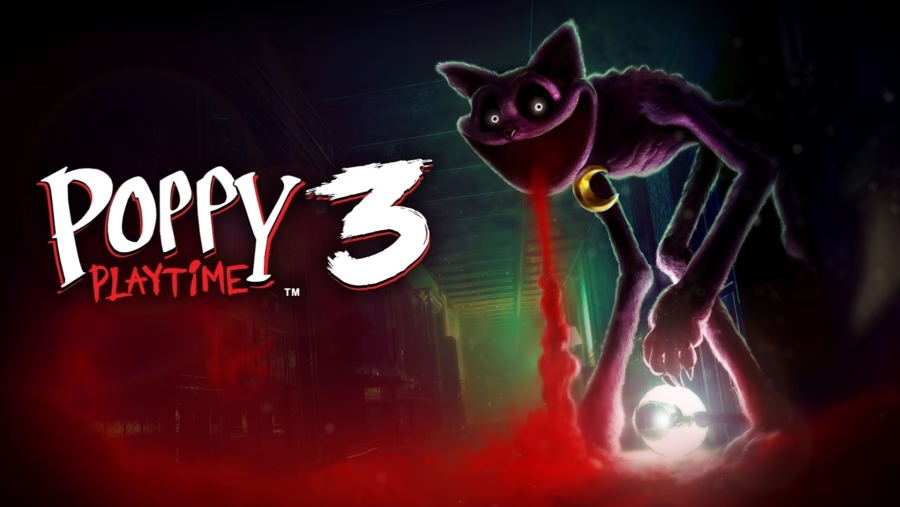Poppy Playtime: Chapter 1-3 Spiel
Poppy Playtime as an indie horror game has a special place in many PC gamers’ heart. There is no doubt it has a special place in my heart as well, only that place doesn’t happen to coincide with “great” in “great-ok-fail” scale. Chapter 1 went viral as a new IP in horror with its focus on intense chase sequence. Its survival horror predecessors built chase sequences around the stealth mechanics, whereas the new comer created a almost film-like, action oriented sequence that is still true to the tone of the horror while providing smooth transition in each moment of desperation.
The game was released on Windows PC first then later ported over to consoles and other platforms. I am reviewing Poppy Playtime Chapter 1 through 3 based on what I have experienced on PS5. One of the reasons I waited for a console version was the game’s rather bug-ridden status. Despite having gone viral, there were clear indications it is not free of game-breaking glitches. On the console release, several minor details were changed, such as new actors in in-game VHS tapes cinematic, with new features, such as DualSense support, were added to the game.
The problem with the Poppy Playtime as the franchise begins with the fact that the first chapter introduced “GrabPack” as its own sci-fi tool for puzzles, only to rework it in later chapters. The most significant changes came in chapter 3, calling it the version 2.0 of GrabPack. The new mechanic does allow more interesting puzzles and encounters, but seeing as the player cannot reliably get used to the tool of the game, I cannot help but wonder if the rule of the game is constantly being rewritten as the new chapter comes out.
Puzzles themselves are not the game’s strong suit either. Though it creates a play style akin to Portal franchise in its own unique way, the game seems to give up incorporating puzzles as part of world-building in chapter 3. In Portal, solving a puzzle was rewarding to both the player and to the protagonist, and if the antagonist hasn’t prepared the puzzle, there was a good explanation in-game as to why the environment could be “fixed” — not to mention antagonists aren’t sabotaging the protagonist’s effort. Whereas in Poppy Playtime, I don’t see why there are puzzles such as this, let alone why any of the antagonists haven’t straight up destroyed it to prevent the protagonist from escaping.
The infamous three encounters in chapter 3, two chase sequences and one FNaF-like defense, seem to miss the memo on what made the chapter 1 chase sequence great. Against Huggy Wuggy, the player needs to navigate the narrow conveyor belts; while the vent is filled with dead-ends, the experience of outrunning Huggy Wuggy is heart racing, yet fluid, till the moment the player is certain it is over. Compare that to Miss Delight encounter in chapter 3, the chase sequence with small puzzles and a weeping angel, the chapter 3 is clogged with minute mechanics, and the bosses’ (or mascots’) obvious weakness rewards players who know how to keep the head cool. In other words, if you weren’t panicking already, you are even less likely to panic in the encounter.
A side note as I played the game on PS5; chapter 2 and 3 are released on the same day as far as I am aware, but only chapter 3 supports some of the DualSense features. It seems odd that not all chapters aren’t supporting adaptive trigger as the primary tool of the game is literally two extending hands. I understand it is an indie franchise being ported over to consoles, but this is a missed opportunity when DualSense haptic feedback and adaptive triggers can clearly add so much to a horror game.
Conclusions: A Fine Indie Game for Now
On PlayStation Store, Poppy Playtime: Chapter 3 is listed for $14.99 as of now. For an indie game and with the price tag that is about one-fifth of AAA title, I believe the developers are delivering the new kind of horror games at reasonable quality. But the price is quickly mounting. Poppy Playtime is expected to have total of 5 chapters, and if we were to imagine one is buying a new chapter at release every time, total expense would quickly amount to an ordinary AAA game. Will this game, or the journey of following the footsteps of ex-worker in a toy factory, be worth near $75? For that price point, I do believe the franchise needs a major polishing job.
